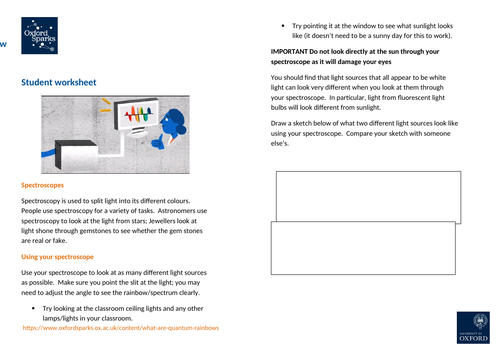




We send a huge amount of information down fibre optic cables in the form of pulses of light. Currently these light pulses are either ‘on’ or ‘off’. European scientists, lead by the University of Oxford, are looking at ways to send photons imprinted with entire spectra which would allow them to send more information at a time. In order to ‘read’ the imprinted photons they need to use spectroscopy.
In this session, students will create their own spectroscope to look at natural and artificial light sources and find out about some of the other uses of spectroscopy.
Learning outcomes:
- ‘White’ light is a mixture of different colours that can be split using prisms and diffraction gratings
- Sunlight appears as a continuous spectrum whereas artificial light often has bright lines of individual colours
- Scientists use spectroscopy as a tool for their experiments
See more at: https://www.oxfordsparks.ox.ac.uk/content/what-are-quantum-rainbows
Something went wrong, please try again later.
This resource hasn't been reviewed yet
To ensure quality for our reviews, only customers who have downloaded this resource can review it
Report this resourceto let us know if it violates our terms and conditions.
Our customer service team will review your report and will be in touch.